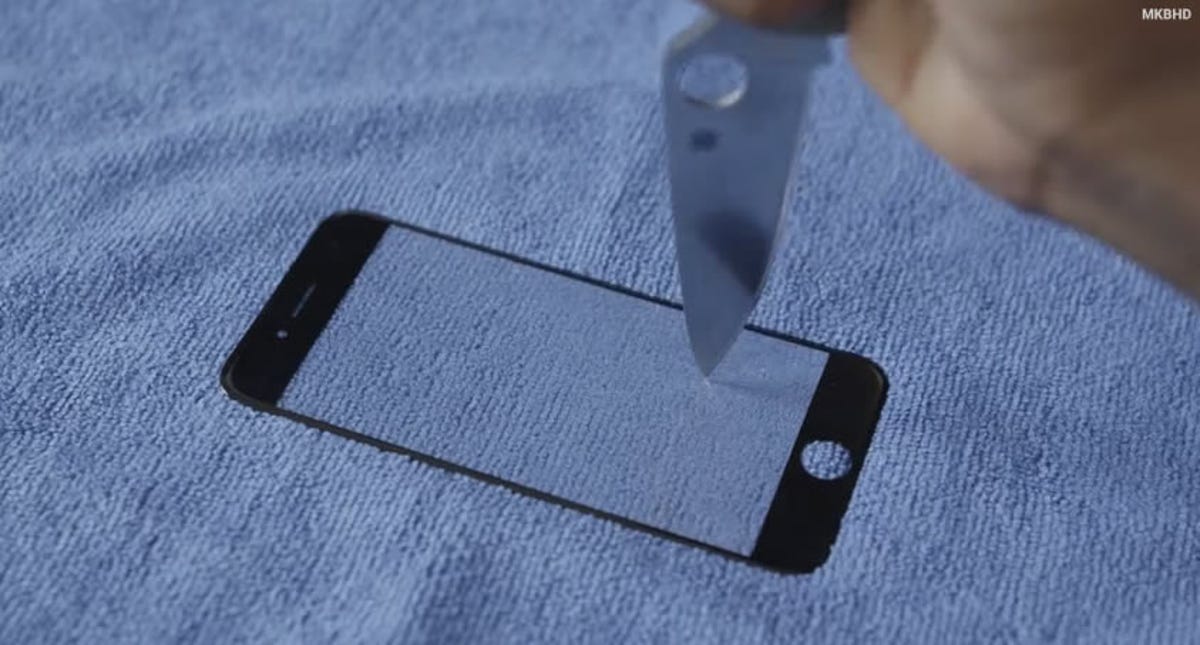
Marques Brownlee/YouTube/screenshot by Lance Whitney/CNET
A video showing an iPhone sapphire screen withstanding scratches from a knife and key could be the real deal, according to an expert who said he was consulted by Apple 18 months ago.
Posted on Monday, the video displays a sapphire crystal screen panel purportedly from a much anticipated 4.7-inch iPhone 6 undergoing such torture tests as knife attacks, key scratches, and some serious bending, and ultimately surviving without a scratch.
So what’s the big deal about a sapphire iPhone screen?
Considered the third-hardest material known, sapphire would make the screen much less vulnerable to scratches and other hazards. Proponents of sapphire say the material would be more scratch-resistant than the Gorilla Glass currently used for the iPhone screens. Compared with glass, sapphire would be harder and tougher and therefore more impervious to cracking or shattering, according to the expert cited by the Guardian. Sapphire is already used to make the iPhone’s camera lens and the cover of the Touch ID sensor found on the iPhone 5S.
But is the screen in the video truly made of sapphire, or is it something faked?
“In my opinion the screen being shown off in the video could well be a sapphire screen,” Professor Neil Alford of the department of materials at Imperial College in London, told the Guardian. “If you make sapphire thin enough, and it’s flaw free, you can bend it quite considerably because it has an enormous strength.”
Alford’s comment that the video “could well be” legitimate doesn’t quite give it the full stamp of approval but it does lend a definite air of credibility to it. Alford said that Apple spoke to him 18 months ago about using sapphire screens.
Another video posted this week by frequent Apple leaker Sonny Dickson also reportedly revealed a sapphire screen able to withstand some heavy-duty bending.
But creating an entire screen of sapphire is more challenging than just adopting it for a small camera lens or Touch ID sensor cover. Because of its hardness, sapphire is much more expensive to produce and cut into the right shapes. But assuming the videos and reports are accurate, clearly Apple has cooked up a cost-effective way to fashion the screens.
“The big issue is how you slice it and polish it because of the hardness of sapphire crystals,” Alford said. “It’s quite problematic; they’ll be forced to use diamond slicers to cut the sapphire for instance. If they can manage the costs, I don’t think there are any downsides to using sapphire at all. It’s a great idea.”



